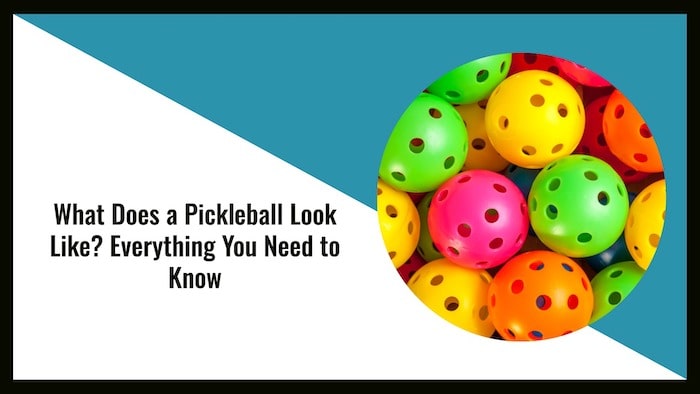Are you ready to step onto the pickleball court and join the ranks of the millions of players worldwide? Well, before you grab your paddle and head to the court, you need to know what a pickleball looks like! Don’t worry if you’re new to the game and have no clue what to expect, that’s where we come in.
In this article, we’ll reveal all the juicy details about this quirky little ball that’s become the centerpiece of one of the fastest-growing sports in the world. From its unique size and weight to its quirky composition, we’ll cover everything you need to know to get started playing pickleball like a pro.
So let’s get ready to dill with it and find out what makes this ball so special!
What is Pickleball and How to Play It
Pickleball was invented in 1965 by three dads who wanted to create a game that their kids could enjoy. They used ping-pong paddles, a perforated plastic ball, and a lowered tennis net to play on a badminton-sized court. The game soon became popular among their friends and neighbors, and eventually spread across the country and the world.
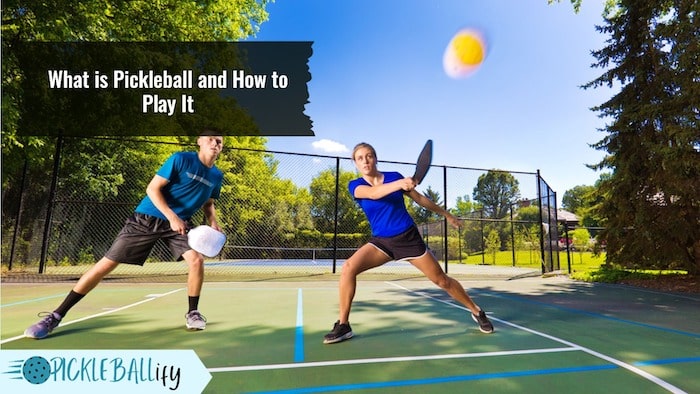
Pickleball is played with two or four players, using solid-faced paddles and a plastic ball with holes. The ball is served underhand across the net into the opposite court.
The serve must clear the non-volley zone, also known as the kitchen, which is a 7-foot area on both sides of the net. The ball must bounce once before it can be returned by the receiving team. After that, the ball can be volleyed (hit in the air) or bounced (hit after one bounce) until a fault occurs.
A fault is any action that stops play, such as hitting the ball out of bounds, into the net, or into the non-volley zone on a volley. The serving team can only score points when they win a rally. The first team to reach 11 points and lead by at least 2 points wins the game.
What Does a Pickleball Look Like?
A pickleball is a small, round ball with a diameter of about 4 inches and a weight of about an ounce. 26 to 40 holes have been bored through the rigid plastic that makes up the object. The holes enable the ball to travel farther and quicker than a standard ball by reducing wind resistance.
The playing surface and lighting can have an impact on the pickleball ball’s color. Yellow, orange, white, green, and neon are a few typical colors. To help players see and track the ball, the color should stand out against the background.
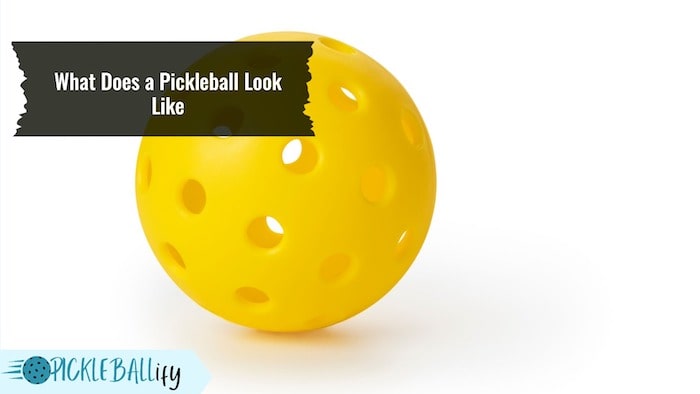
Pickleball has an impact on how the ball performs on various surfaces and in various weather conditions, which makes it a crucial component of the game. For instance, indoor balls fly slower and straighter than outside balls because they are softer, lighter, and have larger holes.
In order to fly faster and curve more, outdoor balls are tougher, heavier, and have smaller holes than indoor balls.
Your pickleball strategy and technique may also be impacted by the type of ball you utilize. For instance, whereas outside balls are better suited for power strokes and spins, indoor balls are simpler to handle and position with finesse shots.
For your particular playing location and style, you should select the appropriate pickleball.
The Different Types of Pickleball Balls: Indoor vs Outdoor
There are two main types of pickleball balls: indoor and outdoor. They have different characteristics that make them suitable for different playing conditions. Here are some of the differences between indoor and outdoor pickleball balls:
- Compared to outside balls: Indoor balls are softer and lighter. Its bigger holes (diameter: around 0.4 inches) minimize air resistance, causing them to fly slower and straighter. The effects of wind and humidity are less noticeable.
- Compared to indoor balls: Outdoor balls are heavier and tougher. They have holes with a smaller diameter (approximately 0.3 inches), which increases air resistance, causes them to fly quicker, and curve more. The effects of wind and humidity are greater on them.
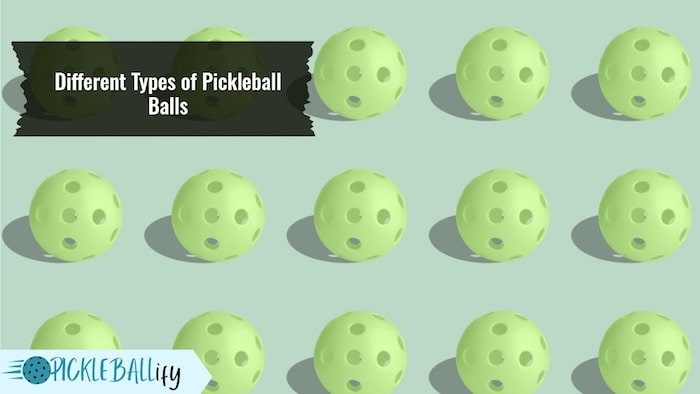
- While outside balls can be orange, green, neon, or other vibrant colors to make them more apparent against grass or concrete, indoor balls are typically white or yellow in hue.
- Since they are less exposed to the sun, dirt, water, and other factors that might destroy them, indoor balls are more durable than outdoor balls.
- Indoor balls are cheaper than outdoor balls because they are made of lower quality plastic.
You should always use the appropriate type of pickleball ball for your playing surface. Using an indoor ball outdoors can cause it to crack or break easily due to the impact with the hard ground. Using an outdoor ball indoors can cause it to bounce too high or skid on the smooth floor.
How to Choose the Right Pickleball Ball for Your Game
Here are few steps to choose the right pickleball ball:
Consider the Playing Surface and Conditions –
Different types of pickleball balls are designed for different playing environments.
Indoor balls are softer, lighter, and have larger holes than outdoor balls. They are more suitable for smooth and flat surfaces, such as wood or tile floors.
Outdoor balls are harder, heavier, and have smaller holes than indoor balls. They are more suitable for rough and uneven surfaces, such as concrete or asphalt courts. They are also more resistant to wind and humidity.
Consider Your Skill Level and Playing Style –
Different types of pickleball balls can also affect your gameplay and strategy.
Indoor balls are easier to control and place with finesse shots, while outdoor balls are more suitable for power shots and spins.
Indoor balls also tend to have longer rallies and less bounce than outdoor balls. If you are a beginner or a casual player, you might prefer indoor balls for their forgiving and fun nature. If you are an advanced or competitive player, you might prefer outdoor balls for their speed and challenge.
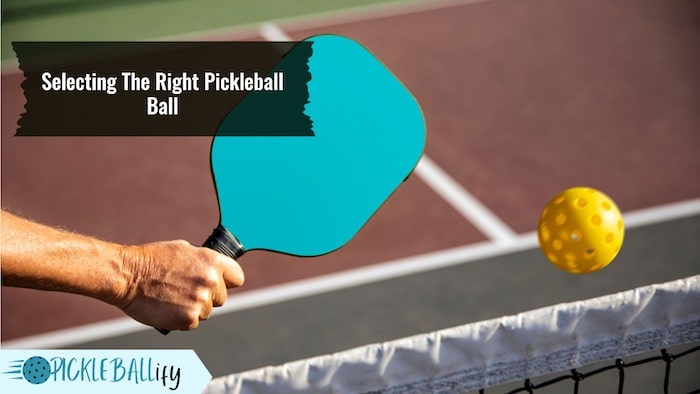
Consider the Official Rules and Regulations –
If you are playing in a tournament or a sanctioned event, you need to use a pickleball ball that meets the official standards set by the governing bodies of the sport, such as the USA Pickleball Association (USAPA) or the International Federation of Pickleball (IFP).
These standards specify the size, weight, bounce, hardness, color, and number of holes of the approved pickleball balls. You can check the list of approved pickleball balls on their websites or look for their logos on the packaging of the balls.
Consider Your Personal Preference and Comfort –
Ultimately, the best pickleball ball for you is the one that you feel comfortable and confident with. You might have a favorite brand or color that you like to use.
You might also want to try different types of pickleball balls to see which one suits your game best. You can ask your friends or fellow players for recommendations or borrow their balls to test them out.
How to Care for Your Pickleball Balls and Extend Their Lifespan
Pickleball balls are destructive. They can wear out over time due to frequent use, exposure to elements, or impact with hard surfaces. However, there are some ways to prolong their lifespan and keep them in good shape. Here are some tips to care for your pickleball balls:
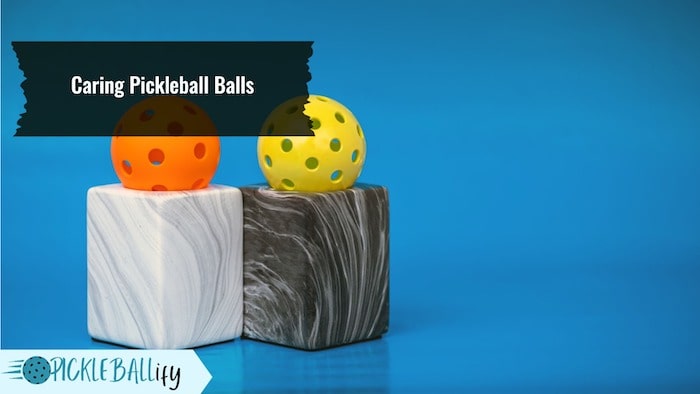
- Store them properly – Keep your pickleball balls in a cool and dry place away from direct sunlight, heat sources, or moisture. Avoid leaving them in your car trunk or outside for long periods of time. Extreme temperatures can damage the plastic material and cause it to crack or deform.
- Clean them regularly – Wipe your pickleball balls with a damp cloth or a mild soap solution after each use to remove dirt, dust, or debris that can affect their performance or appearance. Rinse them with clean water and dry them thoroughly before storing them.
- Replace them when needed – Check your pickleball balls for signs of wear and tear, such as cracks, soft spots, out-of-roundness, or discoloration. If you notice any of these issues, it’s time to replace your balls with new ones. Using damaged balls can affect your gameplay and safety.
FAQs
Pickleballs are typically made of a type of hard plastic called polypropylene, which gives them their distinctive bounce and durability.
No, pickleball must be played with a pickleball. Using a tennis ball or any other type of ball can significantly alter the game’s dynamics and make it less enjoyable.
Yes, the hole pattern on a pickleball is designed to make it more aerodynamic, which improves its flight characteristics and makes it easier to hit accurately.
A standard pickleball has 26 holes, arranged in a specific pattern to optimize its performance.
The lifespan of a pickleball can vary depending on factors like the quality of the ball, the playing surface, and the frequency of use. However, most pickleballs are designed to last for several games before needing to be replaced
Final Words
In conclusion, if you want to play this thrilling and quick-paced activity, you must have a basic idea of what pickleball looks like.
Knowing the specifics of this unusual ball, like as its size, weight, and hole design, can help you strike the ball more correctly and enjoy the game to the fullest whether you’re an experienced player or just getting started.
You may even put your own unique spin on your pickleball game with the many colors and personalization choices available. Take a minute to admire the little ball that has evolved into the center of one of the world’s fastest-growing sports the next time you go onto the court.
The pickleball is a remarkable game-changer because of its unique bounce and aerodynamic shape!

